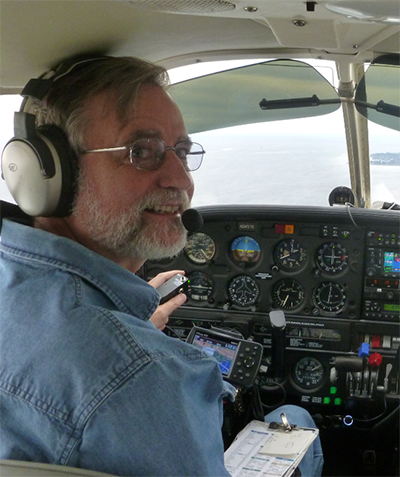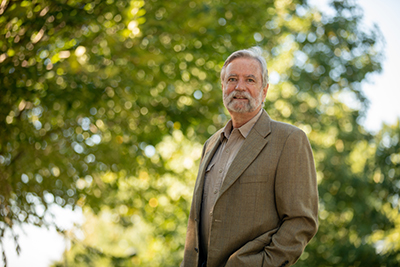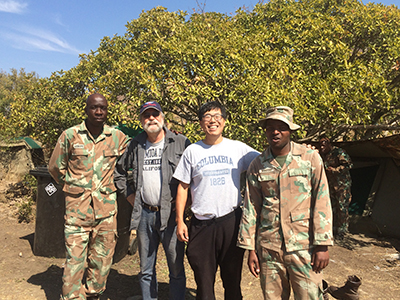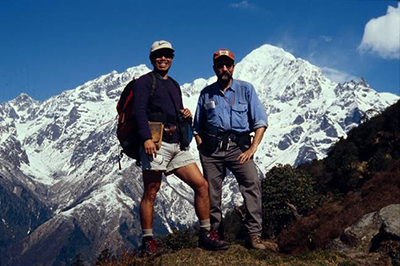Mark Harrison
University of California, Los Angeles
Citation
Professor Mark Harrison of the University of California, Los Angeles, is a geochemist and geochronologist whose interests and contributions span a broad range, including, but not limited to, present-day tectonics of the Himalayas and Tibet, the nature of the Hadean Earth and theoretical and applied thermochronology. Early in his career, Mark led the advancement of the argon-40/argon-39 isotopic system to a new level of sophistication that made it possible to recover quantitative information on the time-temperature histories of strategically chosen crustal rocks. He and his colleagues and students applied this system to some of the most perplexing and important tectonic settings of the day, including relatively unstudied regions such as the Tibetan Plateau as well as long-debated terranes such as the northern Appalachians. Mark’s contributions to potassium-feldspar thermochronology through the multi-diffusion domain (MDD) model — developed with Oscar Lovera and Frank Richter — were particularly far reaching. Their impact was perhaps greatest in Tibetan tectonics, where Mark and his team documented the Gangdese thrust, a south-directed fault carrying the rocks of southern Tibet over the Tethyan sequences to the south. With structural geologist An Yin, Mark demonstrated that the Gangdese thrust system (GTS) spanned the entire length of the suture between the syntaxes, making the GTS the oldest collision zone-wide thrust system responsible for the earliest episode of uplift in southern Tibet. Mark and colleagues also showed that “continental extrusion” played an important role in accommodating convergence and that the large “lithospheric faults” of Asia can move at San Andreas-like speeds. Harrison’s second “grand contribution” to crustal geoscience was his “mission to really early Earth.” In the early 2000s, he organized an international consortium to investigate the Hadean (4+ billion years old) zircons of Western Australia’s Jack Hills, enlisting researchers from Europe, Australia and North America. The effort led to vastly expanded databases of Hadean zircon ages and oxygen and hafnium isotope ratios, as well as detection of fission xenon and an estimate of the uranium/plutonium ratio of early Earth. Taken together, the results argue strongly for the existence of continents as early as 4.4 billion years ago and crustal cycling like that of today. Mark later turned his attention to mineral inclusions in the Jack Hills zircon suite, which ultimately led him to suggest that plate tectonics was well underway in the Hadean and that life had emerged by ~4.1 billion years ago. These suggestions have stimulated the imaginations and energy of early-Earth researchers worldwide.
— E. Bruce Watson Rensselaer Polytechnic Institute Troy, New York
Response
Thank you, Bruce, for the generous citation and my AGU colleagues for the award of the Walter H. Bucher Medal. I learned on AGU’s website that the medal was established in 1966, the year following Professor Bucher’s passing. I was surprised for a couple of reasons to see James Gilluly listed as its first recipient and wondered what Walter would have thought. While both men focused on lithospheric evolution and were giants in that field, they held profoundly opposing tectonic views. Bucher thought that orogeny was due to mantle volume changes that caused synchronous, global pulsations of the overlying crust, whereas Gilluly, no doubt influenced by tremors he’d felt in his University of California, Los Angeles, lab, believed that orogeny was globally continuous. But he also championed the view that granites were largely amagmatic, instead forming from metasomatizing fluids introduced into the crust. Both men had advanced original concepts that were consistent with the equivocal evidence of the time but profoundly wrong from our current, global tectonic perspective. In this I’m reminded of Kevin Burke’s aphorism that one’s distinction in science is often measured by how many years you set your field back. What I hope Kevin meant is that being creative and being right can be two different things but both should be appreciated because without the fuel of new ideas — even the ones that momentarily run us up blind alleys — our field would languish. As I peruse the list of Bucher medalists over just the last generation, I’m heartened to see proponents of diametrically opposing views of, for example, continental growth history and the origin of inverted metamorphism. What does this mean? Fifty years on, despite how much more we know about how our planet works than in the Bucher-Gilluly era, we continue to debate fundamental issues of deep time just as they did. For those of you just starting your careers, this is good news. Simply put, those that came before you failed to resolve the most intractable, and thus arguably most interesting, problems in continental geodynamics. This is our unintentional gift to you. Enjoy the journey as you anticipate the AGU medalists of 2050; I hope you’ll have as much fun as I’ve had.
— Mark Harrison
University of California, Los Angeles
Los Angeles, California
Field Photos





